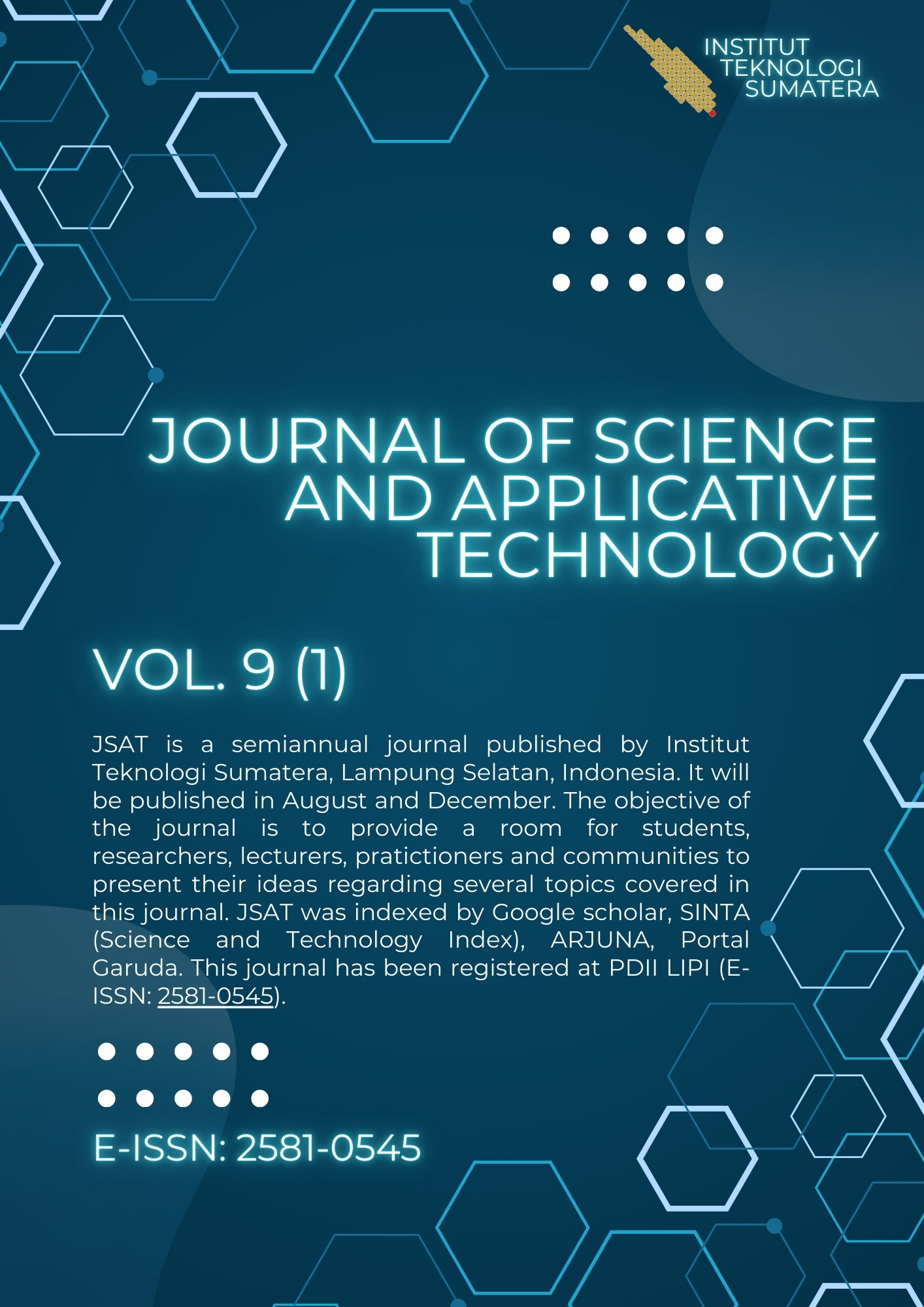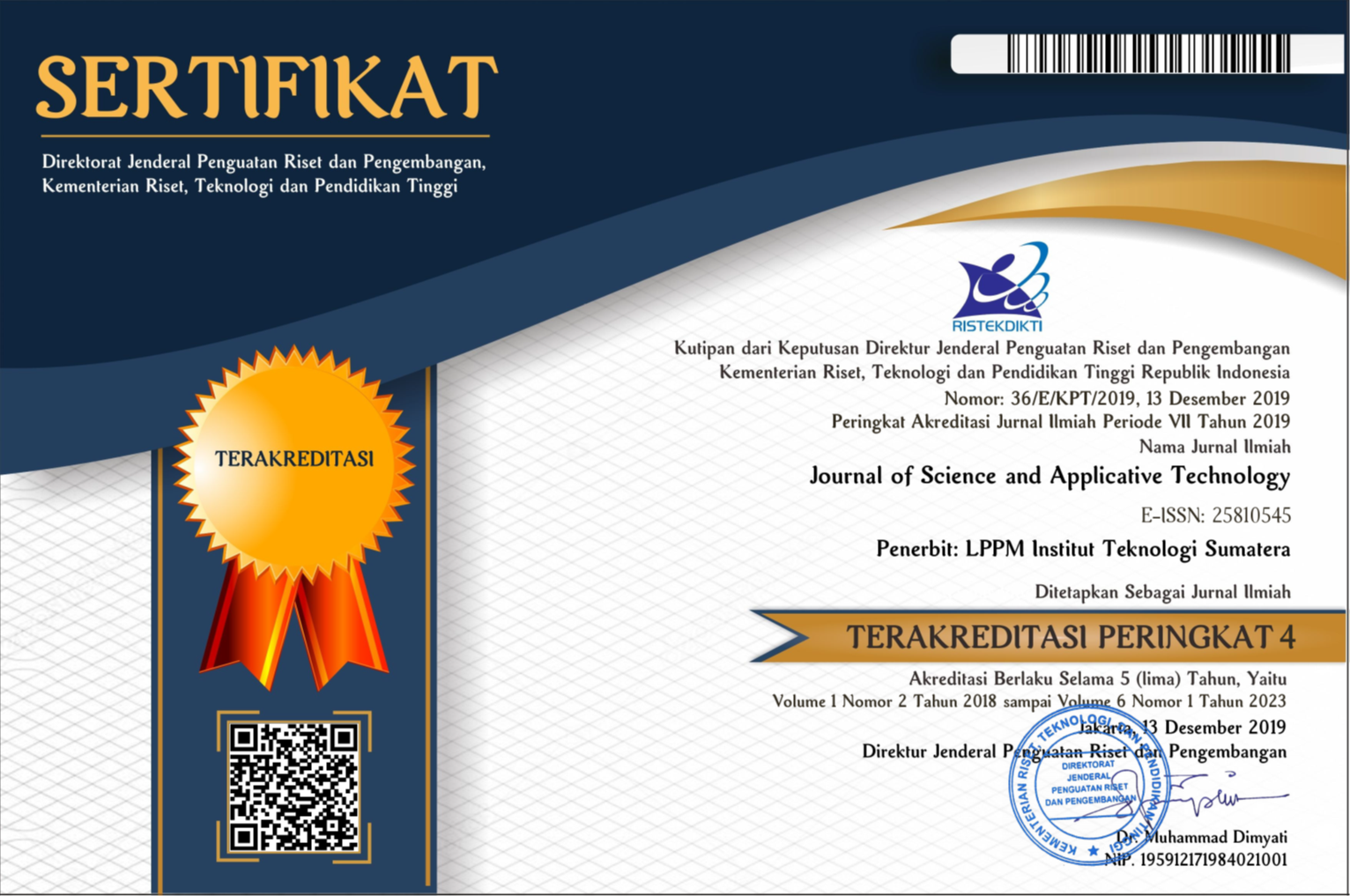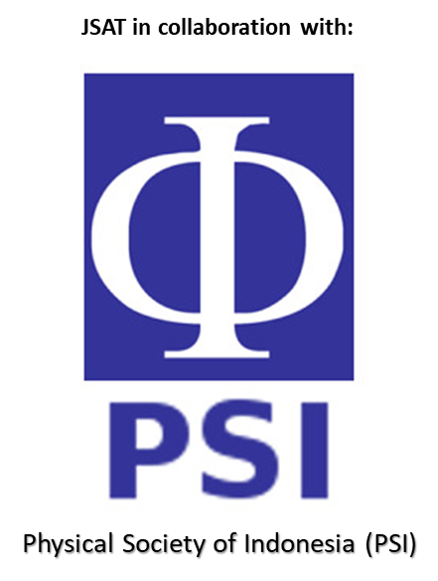Effect of Azimuthal Variability in Estimation of HVSR Parameters and Ground Shear Strain at Kota Baru, South Lampung, Indonesia
Abstract
Kota Baru, a potential capital of Lampung Province in South Lampung, Indonesia, faces significant earthquake risks due to the Great Sumatran Fault and the Sumatra Megathrust. Geologically, the area is part of the Plio-Pleistocene Lampung Formation, predominantly composed of rhyolite-dacite tuff and volcanoclastic tuff, which can amplify seismic shaking. This study investigates azimuthal variations in the Horizontal-to-Vertical Spectral Ratio (HVSR) across 15 locations in Kota Baru to identify their underlying causes. The results show notable changes in peak amplitude (Ao) and dominant frequency (fo) across different azimuths, with Mean Absolute Deviations (MAD) ranging from 0.96 to 5.71 for Ao and from 0.00 to 1.57 for fo. Maximum HVSR values were predominantly observed at azimuths below 30° across most regions. These variations are likely related to differences in soft layer thickness and/or the presence of a suspected fault near the study area, both of which could influence seismic wave propagation. A model of an 8.9-magnitude megathrust earthquake revealed no significant differences in Ground Shear Strain values, with results remaining within the same Modified Mercalli Intensity (MMI) scale. Therefore, despite azimuthal variability, the assumption of isotropic ambient noise in Kota Baru remains valid.
Downloads
References
[2] P. Supendi et al., “On the potential for megathrust earthquakes and tsunamis off the southern coast of West Java and southeast Sumatra, Indonesia,” Nat. Hazards, vol. 116, no. 1, pp. 1315–1328, Mar. 2023, doi: 10.1007/s11069-022-05696-y.
[3] S. A. Mangga, Amirudin, T. Suwarti, S. Gafoer, and Sidarto, “Peta Geologi Lembar Tanjungkarang, Sumatera skala 1:250.000,” Pusat Penelitian dan Pengembangan Geologi, Bandung, 1993.
[4] C. Lachetl and P.-Y. Bard, “Numerical and Theoretical Investigations on the Possibilities and Limitations of Nakamura’s Technique,” J. Phys. Earth, vol. 42, no. 5, pp. 377–397, 1994, doi: 10.4294/jpe1952.42.377.
[5] V. L. Ipmawan, I. N. P. Permanasari, and R. N. Siregar, “Spatial Analysis of Seismic Hazard Based on Dynamical Characteristics of Soil in Kota Baru, South Lampung,” J. Sci. Appl. Technol., vol. 2, no. 1, 2019, doi: 10.35472/281437.
[6] N. Haerudin, R. Rustadi, H. Fitriawan, D. Siska, and M. Farid, “Earthquake Disaster Mitigation Mapping By Modeling of Land Layer and Site Effect Zone in The Kota Baru of South Lampung,” J. Ilm. Pendidik. Fis. Al-Biruni, vol. 8, no. 1, pp. 53–67, Apr. 2019, doi: 10.24042/jipfalbiruni.v8i1.3705.
[7] V. L. Ipmawan, I. N. P. Permanasari, and R. N. Siregar, “Determining Soft Layer Thickness Using Ambient Seismic Noise Record Analysis in Kota Baru, South Lampung,” Makara J. Sci., vol.23,no.1,pp.39–43,Mar.2019, doi: 10.7454/mss.v23i1.10802.
[8] R. Prastowo, V. L. Ipmawan, A. Zamroni, R. Umam, I. N. P. Permanasari, and R. N. Siregar, “Identification of ground motion prone areas triggering earthquakes based on microtremor data in Jati Agung district, South Lampung Regency, Lampung, Indonesia,” presented at the 2ND INTERNATIONAL CONFERENCE ON EARTH SCIENCE, MINERAL, AND ENERGY, Yogyakarta,Indonesia,2020, p. 070003. doi: 10.1063/5.0012081.
[9] T. Cheng, B. R. Cox, J. P. Vantassel, and L. Manuel, “A statistical approach to account for azimuthal variability in single-station HVSR measurements,” Geophys. J. Int., vol. 223, no. 2, pp. 1040–1053, Nov. 2020, doi: 10.1093/gji/ggaa342.
[10] M. Nogoshi and T. Igarashi, “On the amplitude characteristics of microtremor (Part 2),” Zisin J Seism. Soc Jpn. 2nd Ser, vol. 24, no. 1, pp. 26–40, 1971.
[11] Y. Nakamura, “A method for dynamic characteristics estimation of surface using microtremor on the ground surface,” Railw. Tech Res Inst Quart Rep, vol. 30, no. 1, pp. 25–33, 1989.
[12] S. Matsushima, T. Hirokawa, F. De Martin, H. Kawase, and F. J. Sanchez-Sesma, “The Effect of Lateral Heterogeneity on Horizontal-to-Vertical Spectral Ratio of Microtremors Inferred from Observation and Synthetics,” Bull. Seismol. Soc. Am., vol. 104, no. 1, pp. 381–393, Feb. 2014, doi: 10.1785/0120120321.
[13] J. Vantassel, B. Cox, L. Wotherspoon, and A. Stolte, “Mapping Depth to Bedrock, Shear Stiffness, and Fundamental Site Period at CentrePort, Wellington, Using Surface‐Wave Methods: Implications for Local Seismic Site Amplification,” Bull. Seismol. Soc. Am., vol. 108, no. 3B, pp. 1709–1721, Jul. 2018, doi: 10.1785/0120170287.
[14] F. J. Chávez-García, M. V. Manakou, F. Hollender, and D. G. Raptakis, “Site effects using methods based on lateral homogeneity and laterally heterogeneous media: An impossible marriage?,” Bull. Earthq. Eng., vol. 16, no. 7, pp. 2729–2756, Jul. 2018, doi: 10.1007/s10518-017-0296-2.
[15] Y. Nakamura, “Seismic Vulnerability Indices for Ground And Structures Using Microtremor,” World Congr. Railw. Res. Florence, 1997.
[16] Y. Fukushima and T. Tanaka, “A new attenuation relation for peak horizontal acceleration of strong earthquake ground motion in Japan,” Bull. Seismol. Soc. Am., vol. 80, no. 4, pp. 757–783, Aug. 1990, doi: 10.1785/BSSA0800040757.
[17] K. Ishihara, “Evaluatian of Soil Properties for Use in Earthquake Response Analysis,” in Geomechanical Modelling in Engineering Practice, 1986, pp. 241–275.
Copyright (c) 2025 Journal of Science and Applicative Technology

This work is licensed under a Creative Commons Attribution-NonCommercial 4.0 International License.
All the content on Journal of Science and Applicative Technology (JSAT) may be used under the terms of the Creative Commons Attribution-NonCommercial 4.0 International License.
You are free to:
- Share - copy and redistribute the material in any medium or format
- Adapt - remix, transform, and build upon the material
Under the following terms:
- Attribution - You must give appropriate credit, provide a link to the license, and indicate if changes were made. You may do so in any reasonable manner, but not in any way that suggests the licensor endorses you or your use.
- NonCommercial - You may not use the material for commercial purposes.
- No additional restrictions - You may not apply legal terms or technological measures that legally restrict others from doing anything the license permits.





















